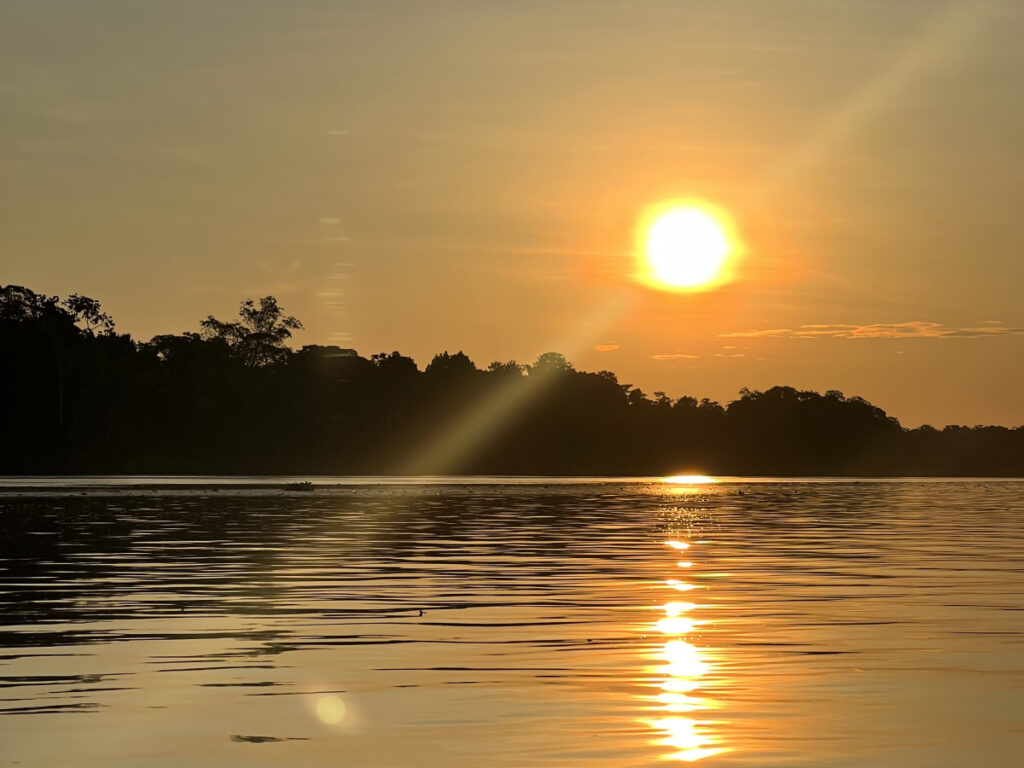When you think of the Peruvian Amazon Tours, you probably picture a luxury lodge deep in the rainforest: white tablecloth dinners, sunset canoe rides, and guided wildlife walks. I had heard so much about these experiences in Iquitos, Peru’s steamy Amazon gateway, that I couldn’t wait to see this entirely different side of the country.
But with my remote corporate life tying me to Wi-Fi, disappearing into the jungle for days wasn’t an option this time (devastating, I know). If I could have stepped away fully, I would have been on a multi-day Amazon lodge tour in a heartbeat — it’s absolutely still on my bucket list. So instead, we came up with a plan: fly into Iquitos, make our way to Nauta, and see if we could find day trips into the Amazon with a local guide. Simple enough, right?
Not quite.
Most Peruvian Amazon tours require at least two days, with the majority stretching to three, four, or even a full week. And while hotels in Iquitos range widely in price, the jungle lodges — gorgeous as they are — don’t come cheap. But then we stumbled across an Airbnb listing for a bamboo hut in the jungle with no walls, only mosquito screens. It was equal parts terrifying and intriguing. Naturally, we booked it.
Peruvian Amazon Tours from Iquitos
If you have the budget and the time, Iquitos offers some of the best jungle lodge experiences in South America. Many of the region’s most popular Amazon River tours in Peru are multi-day stays, reached only by boat. Expect guided wildlife walks, piranha fishing, night safaris, and early-morning bird watching.
Popular options include:
- Luxury Amazon lodges in Peru such as Muyuna Lodge, Treehouse Lodge, and Pacaya Samiria Amazon Lodge.
- Multi-day adventures into the Pacaya Samiria National Reserve for rare wildlife sightings.
- Specialized tours for photography, birdwatching, or medicinal plant knowledge.
Best time to visit the Amazon in Peru? November to May is the high-water season, when boats can navigate deeper into flooded forests, but wildlife spotting can be trickier. June to October brings lower water levels, more walking trails, and (slightly) less humidity.
If you’re booking a tour, check GetYourGuide or Viator for reputable operators. Personally, I can’t wait to return to Iquitos and finally do one of these in full — the kind where you completely switch off, drift downriver for hours, and fall asleep to the hum of the jungle.
Our Independent Route: From Iquitos to Nauta
We landed in Iquitos on November 28th, tuk-tuks swarming outside the airport. It felt more like Thailand than Peru: the roar of engines, the sticky heat, the unfiltered jungle air. Luckily, we’d only brought small backpacks, having left our suitcases behind in Piura, so we squeezed into a tuk-tuk and rattled into the city.
We had a few hours to kill before heading to Nauta, so we wandered around. It was hot — the kind of heat that sits heavy on your skin, with humidity so intense you’re instantly drenched.
Getting to Nauta:
- Colectivo location: Ask your hotel for the correct spot; most are clustered around informal “stations” in central Iquitos.
- Duration: ~2 hours
- Cost: Around 15–20 soles per person
- Tip: Arrive early to get a good seat — colectivos leave when full, not on a fixed schedule.
After a quick lunch and a mental note to pack more electrolyte packets next time, we made our way to a colectivo “station” in town (read: a chaotic garage full of minivans) for the two-hour drive to Nauta.
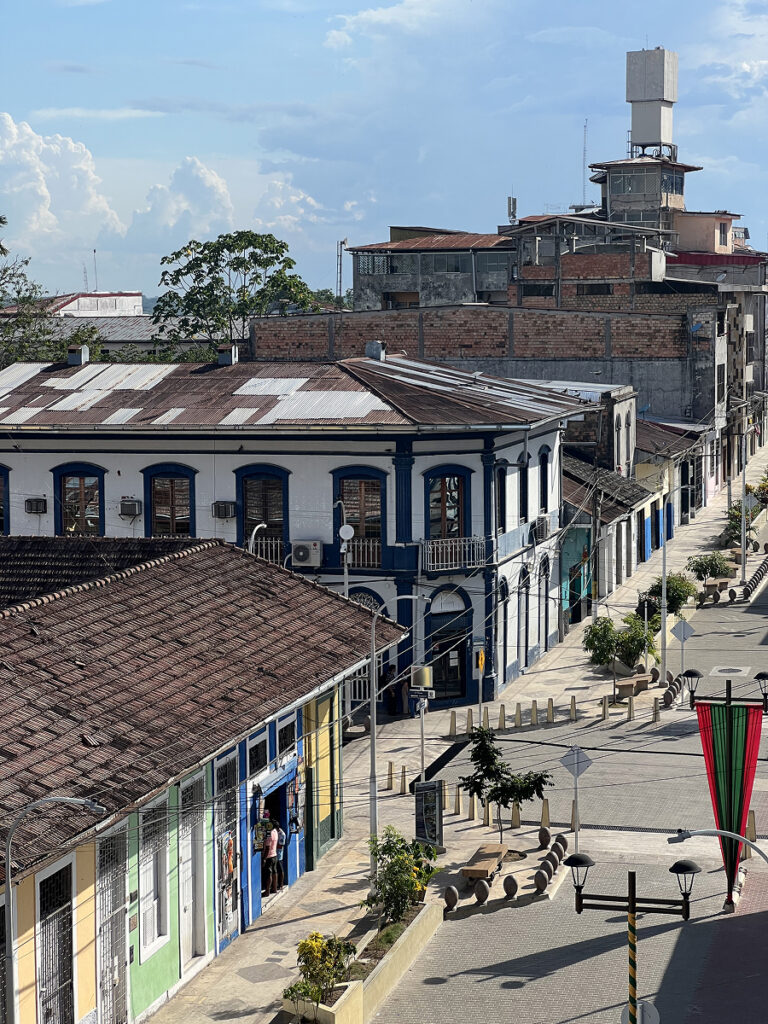
Life in a Jungle Hut
Our Airbnb host had arranged for a local tuk-tuk driver to meet us in Nauta. He became our unofficial friend and fixer for the week. The ride to the Airbnb was pure comedy: bouncing through town, then along mud tracks in the jungle.
When we arrived, I wasn’t sure whether we’d made a terrible mistake. The hut looked… rustic. The hosts — a European couple who had been living off the land here for years — explained they were in the middle of building more huts.
Inside, though, it was surprisingly perfect. No walls, just mosquito screens, so the jungle air flowed through constantly. In the mornings, monkeys swung in the trees nearby. In the afternoons, rain hammered the leaves, the sound echoing through the hut.
Good to know:
- Cost: It can vary greatly
- Electricity: Limited in some jungle Airbnbs; ask in advance if you need to work remotely.
- Wildlife: Expect insects, lizards, and yes, the occasional cockroach.
- Bring: A headlamp, mosquito repellent, and dry bags for electronics.
The shower was outdoors, with wooden walls for privacy but open to the stars — warm, humid air making even a cold rinse feel divine.
It wasn’t without its challenges. Termites ate our shoes one night. Cockroaches made brief appearances. But there were endless bananas (the sweetest I’ve ever eaten) and fresh maracuyá from the village.
If you’re curious, this is the place.

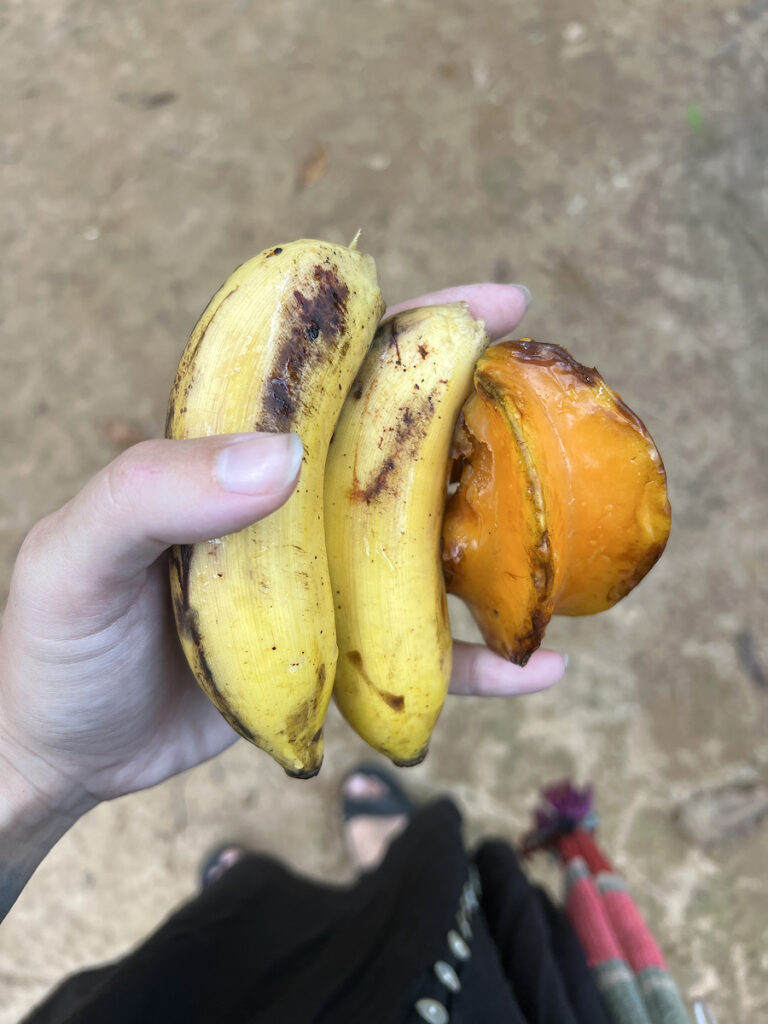
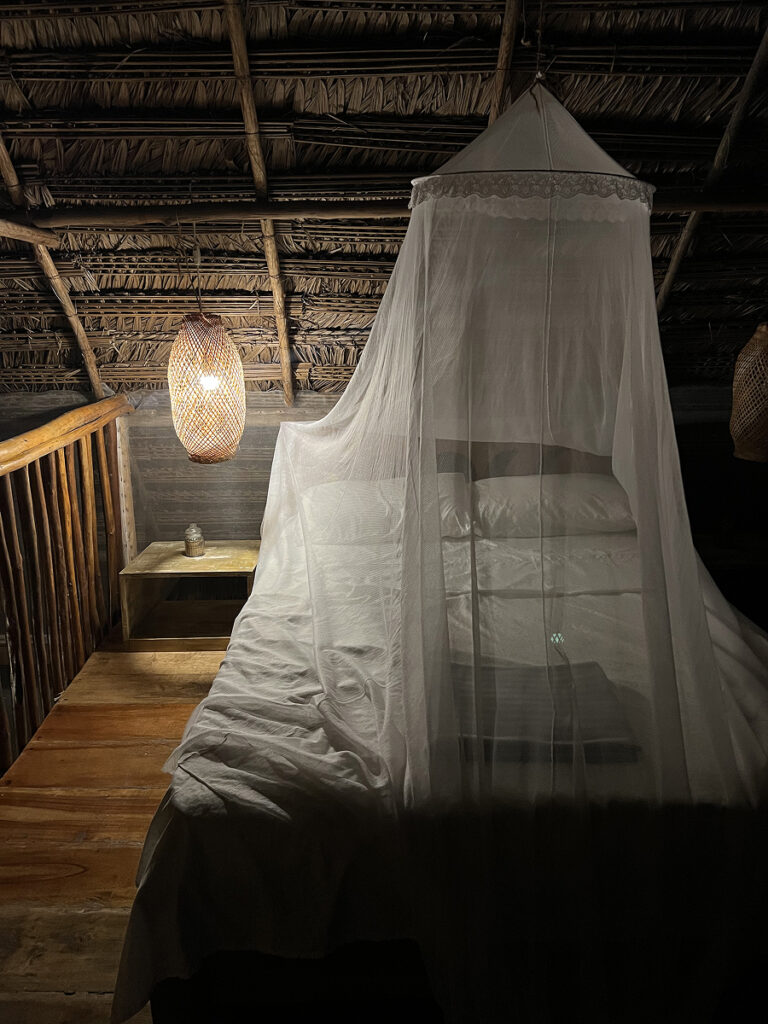
Amazon Day Trips from Nauta
1. Pink Dolphins and a Banana Plantation
Our host gave us the number of a local man who lived a 20-minute jungle walk away and owned a boat. He took us an hour down the river, where we saw pink dolphins leaping in the water — playful, almost posing for us. We stopped at a small banana plantation and an eco-village before heading back.
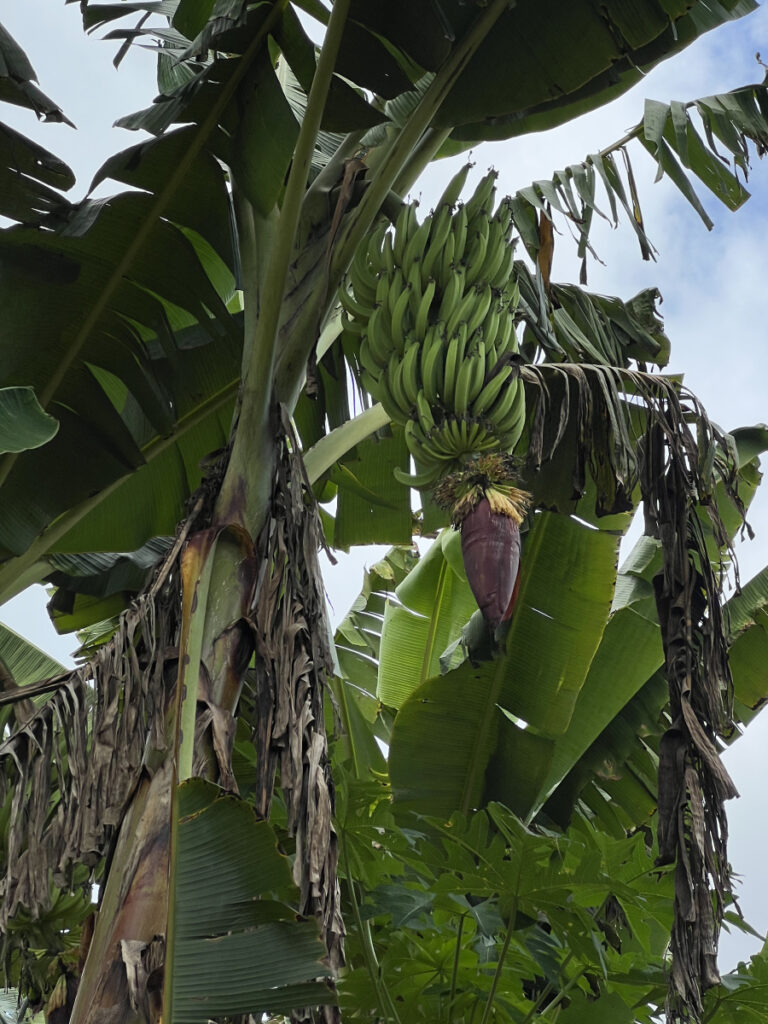
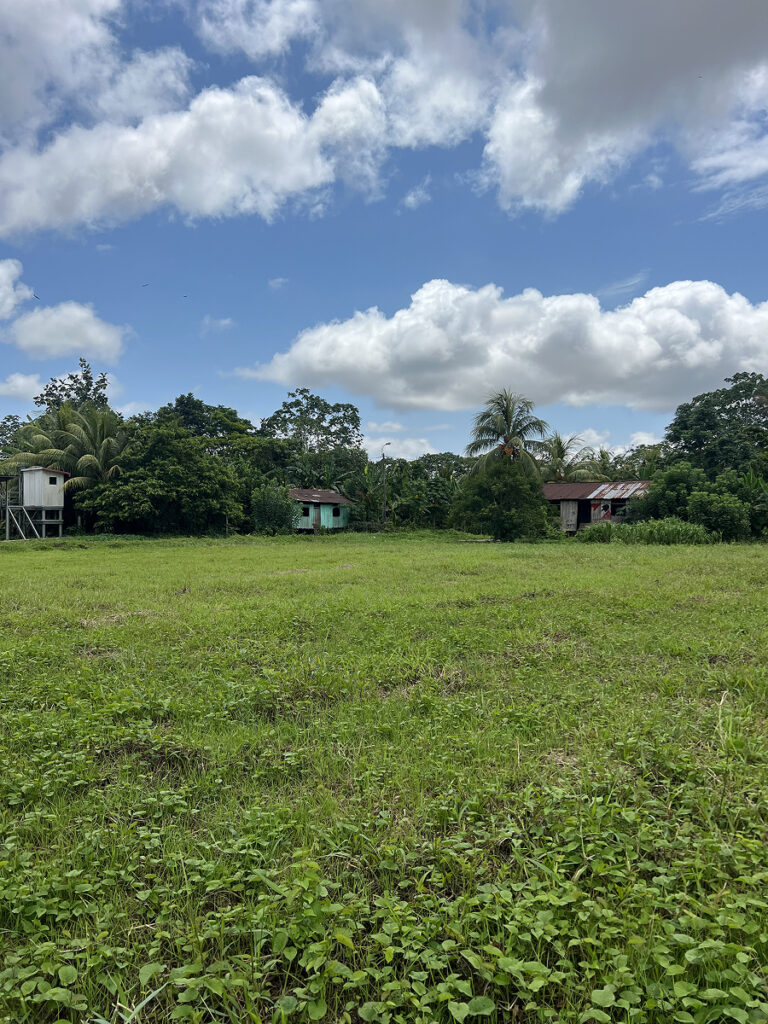
2. Monkeys and a Jungle Walk
Determined to see monkeys, I spent a morning calling every local guide I could find. Eventually, we were connected to a guide with a group heading out that day. We joined for part of their trip, getting dropped at a riverside villa where another guide led us into the jungle. We saw tiny monkeys curled up on trees, larger monkeys jumping from tree to tree above us, and learned about medicinal plants. On the way back, we fished (unsuccessfully, but with enthusiasm) before a long, golden-hour ride home on the river.
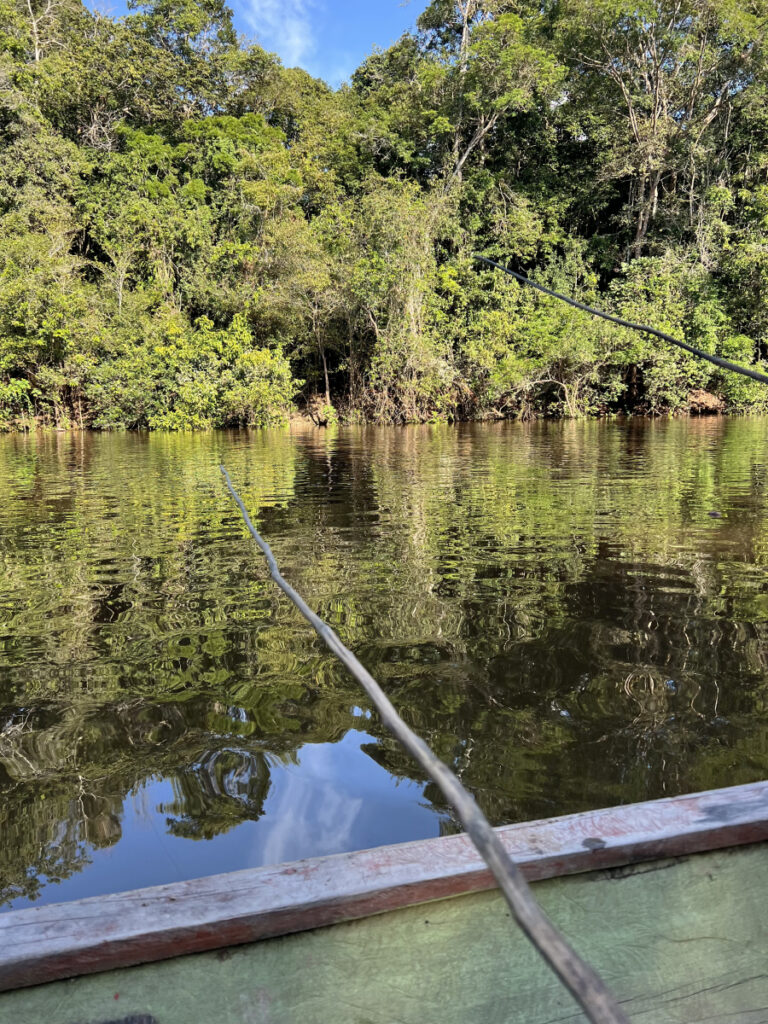
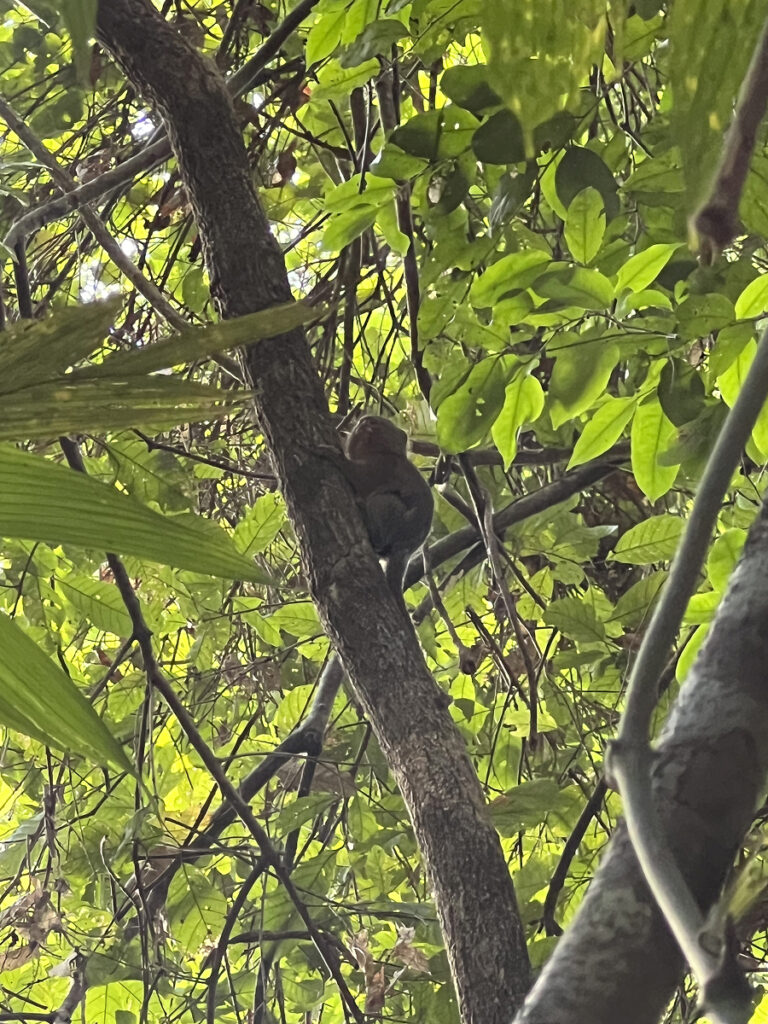
3. Nauta by Tuk-Tuk
On my final free day, we hired our tuk-tuk friend to take us exploring. He showed us a viewpoint over Nauta, a swimming hole, a riverbank, and a pond filled with turtles. It was charmingly local, the kind of day you don’t find in guidebooks.
Returning to Iquitos
Back in Iquitos for one night before our flight, we treated ourselves to Al Frío y Al Fuego, a floating restaurant reached by boat. With cocktails in hand and the river glittering around us, it was the perfect closing scene for our Amazon chapter.
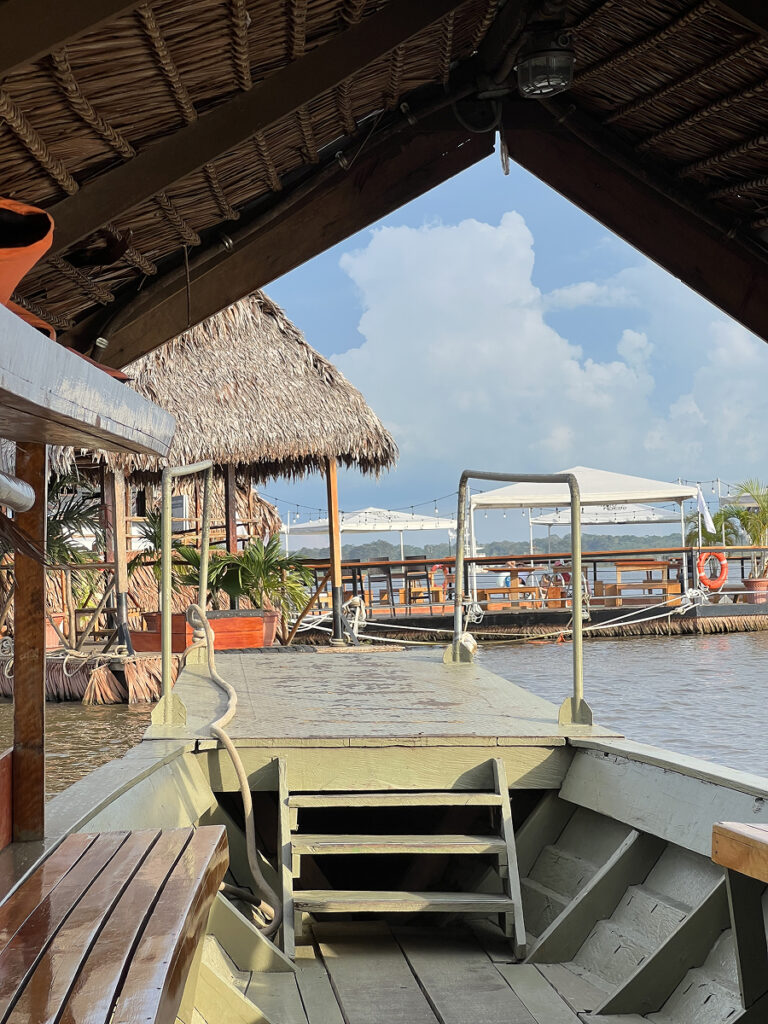
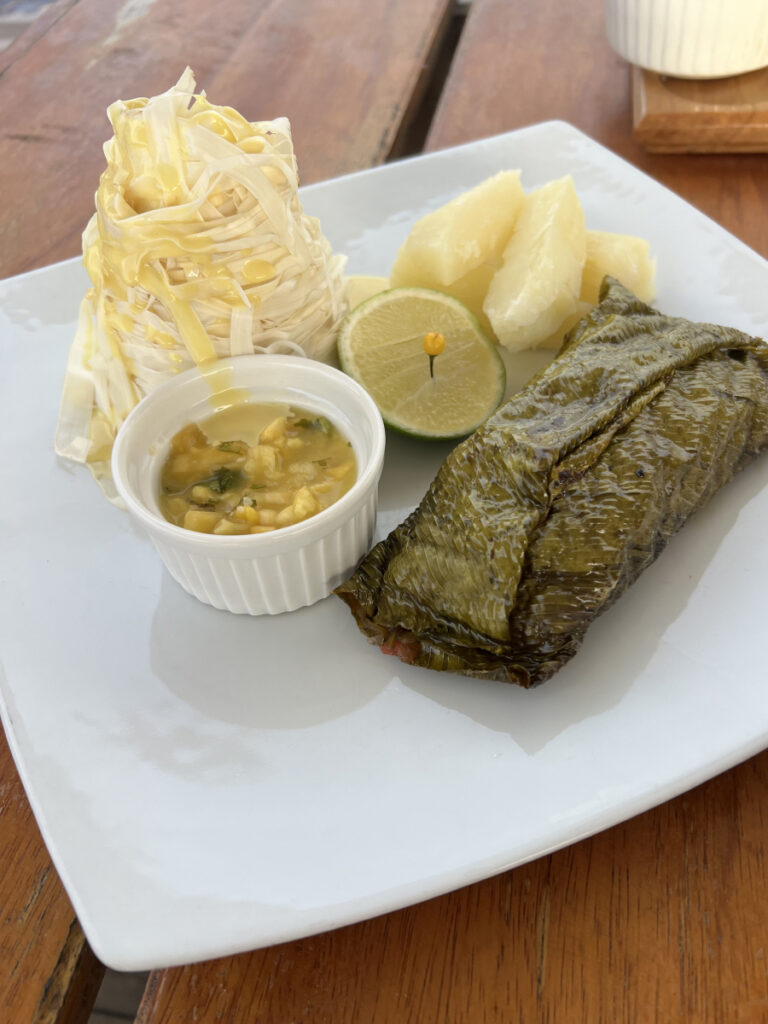
Peruvian Amazon Tours vs. Independent Travel
Tours: Effortless logistics, guided wildlife encounters, and comfortable lodges — but expensive and time-intensive.
Independent: Flexible, cheaper, and more personal — but requires patience, Spanish, and comfort with the unpredictable.
If you have the time and budget, a tour will take you deeper and make wildlife sightings more likely. But if you’re up for a more improvised adventure, independent Amazon travel in Peru can be just as memorable.
Practical Tips
- Getting to Nauta: Two hours by colectivo from Iquitos. Cost ~15–20 soles.
- Money: Bring cash — ATMs are limited.
- Mosquitoes: Real. Bring repellent.
- Water: Always bottled or filtered.
- Best time to visit the Amazon in Peru: Decide based on high-water (Nov–May) vs low-water (Jun–Oct) season activities.
- Connectivity: Iquitos has cell reception; jungle lodges may have no signal at all.
- Packing list: Lightweight clothing, long sleeves, quick-dry fabrics, headlamp, dry bags, power bank, sandals for showers.
Final Thought
Whether you’re sipping cocktails at a luxury Amazon lodge or watching the rain from a bamboo hut with no walls, the Peruvian Amazon will stay with you. I left knowing I’d only had a taste of it this time — and I’m already planning the trip back, this time with a proper multi-day lodge stay in the mix.

